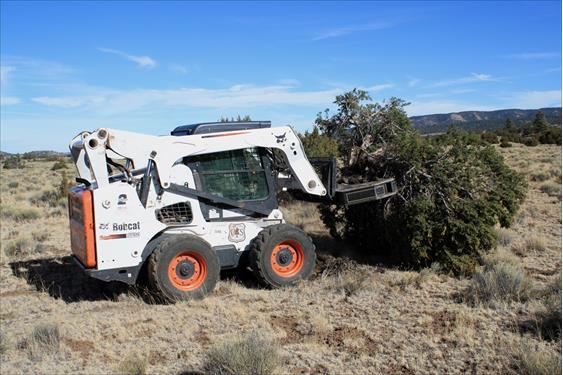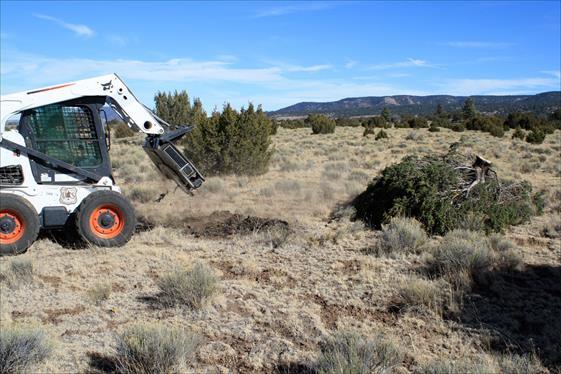|
Good afternoon, Please see the attached news release with embedded photos about the Kaibab National Forest’s successful treatment of almost 3,000 acres through use of a grant from the Arizona Game and Fish Department. Thank you, Jackie
Kaibab National Forest treats almost 3,000 acres with Heritage Grant
Williams, Ariz., March 24, 2015—For Immediate Release. The Kaibab National Forest recently completed treatment of almost 3,000 acres of grassland on the Williams
Ranger District using a $50,000 Heritage Grant awarded by the Arizona Game and Fish Department.
Specifically, the Kaibab National Forest used an agra-axe, which is a tree shearing machine, to remove encroaching junipers and other conifers from 2,901 acres of a historic grassland in the far northern corner of the
Williams district near White Hill. The purpose of the work was to restore habitat for ferruginous hawks, burrowing owls, golden eagles, Gunnison’s prairie dogs and pronghorn antelope.
“This funding was obtained specifically to address non-game species that rely on grassland habitat in northern Arizona,” said Justin Schofer, wildlife biologist. “Interest in and funding for grassland restoration for
game species has been a longtime, worthwhile and ongoing effort. Through the Heritage Grant program, the Arizona Game and Fish Department has shown its commitment to restoration for non-game species such as hawks, prairie dogs and other wildlife that also
rely on grassland habitat.”
The agra-axe project involved cutting about 100 to 300 trees per acre in the grassland. Many large trees were retained to provide important foraging perches and suitable nesting habitat for ferruginous hawks and other
raptors. Cut trees were often crushed, which improves the line of sight for Gunnison’s prairie dogs and other wildlife species. Also, pinyon and juniper trees on rocky hills and outcrops were left, as they historically served as nesting and roosting habitat.
Functioning grasslands are declining across the Southwest due to a variety of factors, which is resulting in loss of wildlife habitat and other negative impacts to ecosystem health. By removing encroaching trees and
conducting prescribed burns on a broad scale, forest managers hope to reduce tree densities, reestablish natural fire regimes, and promote grassland-associated wildlife species.
The completed 2,901-acre project complements other work accomplished on the district in recent years as well as future projects being planned to restore historic grasslands. Due to their important ecological role, the
Kaibab National Forest has identified restoring grasslands by reducing tree encroachment and restoring fire as a priority in its recently revised Land and Resources Management Plan. Plan objectives include reducing tree density to less than 10 percent on 5,000
to 10,000 acres of historic grasslands annually.
The Arizona Game and Fish Department Heritage Fund Grant Program provides funding for wildlife conservation programs in Arizona. It was established in 1992 as a way to promote outreach in order to enhance important
partnerships and generate fresh approaches in support of the department’s mission. Since inception, the department has awarded more than $13 million in support of more than 670 projects throughout the state.
###
An agra-axe during and after removal of a conifer tree as part of grassland restoration. |
Attachment:
1650-1_so_AZGFDHeritageGrantWRDGrasslands_2015_0324.pdf
Description: 1650-1_so_AZGFDHeritageGrantWRDGrasslands_2015_0324.pdf



